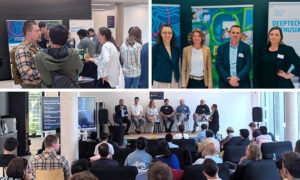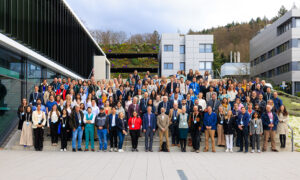
Super impressions
From tips for using tricky fluorophores to an understanding of how long a project can take, there was something for everyone at the EMBL Advanced Course Super-Resolution Microscopy last month. Now in its second edition, the course is jointly organised by the EMBL Advanced Light Microscopy Core Facility and corporate partner Leica Microsystems.
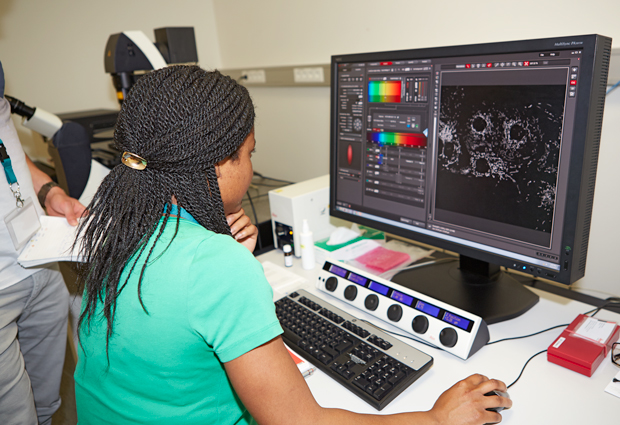
Super-resolution microscopy pushes the boundaries of conventional microscopes, enabling scientists to visualise structures with higher resolution than ever before, increasing our understanding of important molecular pathways inside living cells – a feat that earned its developers the 2014 Nobel Prize in Chemistry.
Over six days, course participants covered theory and practical applications, gaining hands-on experience with the latest commercially available super-resolution microscopes for STED and GSDIM localisation, alongside in-depth tuition and talks from more than a dozen renowned guest researchers and experts from EMBL and Leica Microsystems. Towards the end of their busy week, we asked a few of the participants for their impressions.
What’s one thing you’ll definitely be taking back with you to your lab?
“There are certainly some techniques that I really wanted to try, and here I got to ask about technical details and see how things work in practice. I came in with my particular set of preferences, what I liked and didn’t like, but now this course is changing my mind, or widening my perspectives.” Vaclav Beranek, MRC Laboratory of Molecular Biology, UK
This course is changing my mind, or widening my perspectives.
“There’s one fluorophore that I could never get to work in my lab, labelling kidney tissues. I got a great tip that you should use really, really low depletion power for that fluorophore – now I know it wasn’t the fluorophore itself, it was us, and I can go back and try it again.” David Unnersjoe-Jess, Royal Institute of Technology, Sweden
“The teaching, particularly the microscope sessions. Normally someone shows you once during training, and then you’re on your own – the first time you use the microscope, you’re looking around, trying to remember ‘where did they click?’. Here, with the trainer beside you, you work in small groups and gain a lot more confidence on the system. It’s a lot more memorable.” Ella Fung, University of Oxford, UK
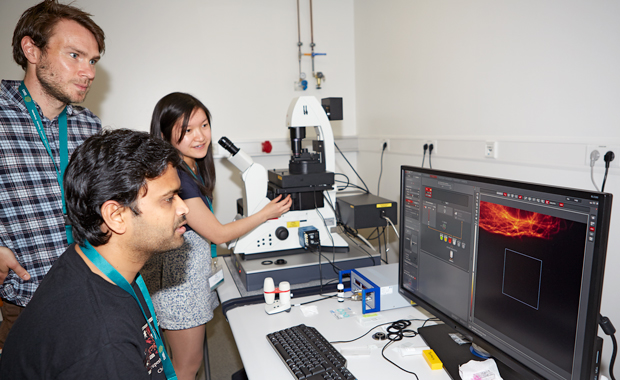
What has this course added to your wish list?
“I would like to have all these people – organisers and speakers – as my collaborators, that would be fantastic! Then we could use all of these tools they have developed.” Vaclav Beranek
“I wish that our institute had something like the Advanced Light Microscopy Core Facility. The set up here is amazing – to have it in house, buzzing with people who can help and give you cool ideas. My wish list: Marko Lampe and his microscopes!” Ella Fung
What was the coolest application you learned of?
“There was a talk by Katrin Willig about a really cool application of STED microscopy, where they actually looked at the brain of a living mouse. I was really impressed by how deep they could go and still keep the resolution.” David Unnersjoe-Jess
As a PhD student, I could see what was achievable.
“I really liked what Christian Eggeling has done, because I think he uses the technique where it provides really interesting new biological knowledge and not just beautiful images. Eggeling studies lipids with these super-resolution techniques, and it seems like a really powerful tool for that.” Vaclav Beranek
“Group leader Jan Ellenberg presented a PhD student’s project using these techniques to visualize the structure of a molecular complex. As a PhD student, I could see what was achievable and also appreciate how much work she had done – I particularly liked that he gave the timescale of the project, and told us what difficulties they had.” Ella Fung
Is there anything people really have to know about this course?
“If you need a technique that no-one in your institute knows or can help with –especially if it’s a rapidly developing technique and you alone can’t keep up with the literature – then this is a great course to attend: it’s like living a review!” Ella Fung
It’s like living a review!
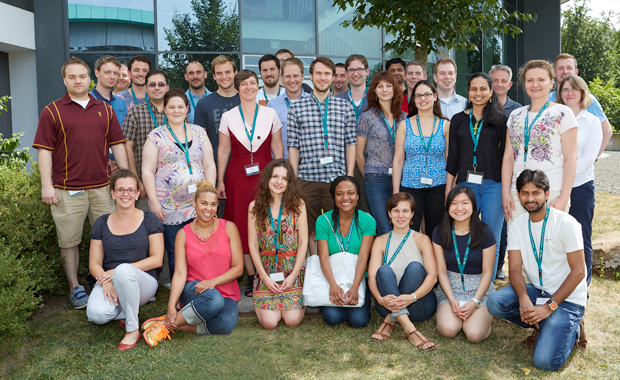
Related links
- Be among the first to learn the date of the next Advanced Course Super-Resolution Microscopy: sign up to the quarterly events e-newsletter
- Learn more about super-resolution microscopy on Science Lab
- Interview with Anna Szymborska and Jan Ellenberg on Science Lab
- Webinar: Applications and Methodology of Super-Resolution Microscopy with Leica SR GSD 3D
- Webinar on demand: Unleashing the Powers of Super-Resolution Microscopy to Solve Immunological Challenges
- Leica Super-Resolution
- EMBL Corporate Partnership Programme
- See the programme and details of organisers, speakers and trainers for this year’s EMBL Advanced Course: Super-Resolution Microscopy
- Courses and conferences at EMBL
